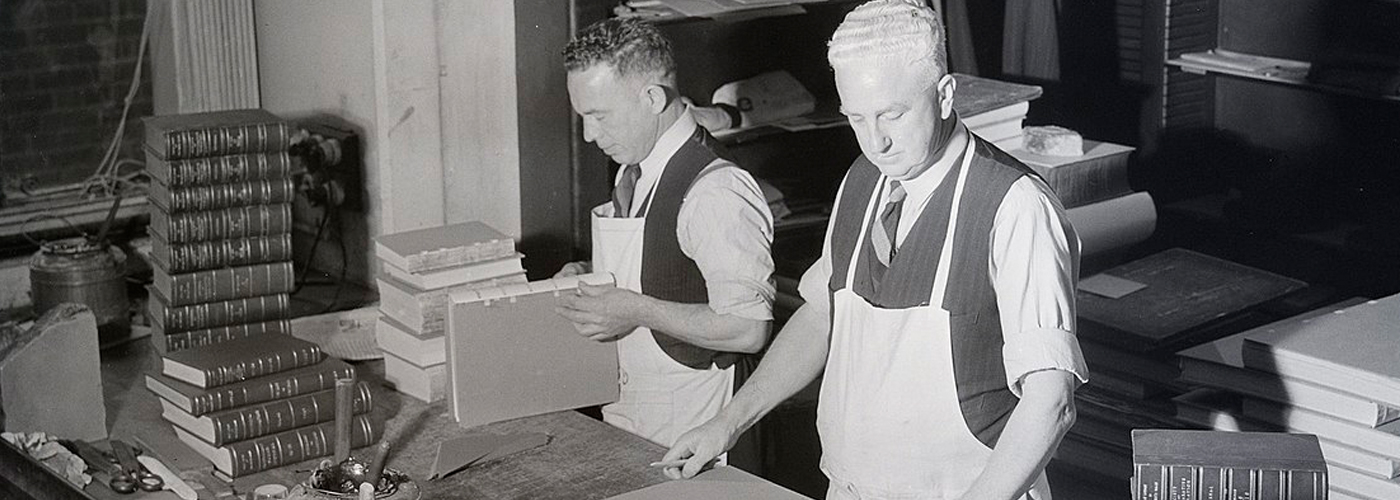
Archibald Leighton is generally credited with having introduced cotton-based book cloth to wholesale bookbinding, which were of great importance to the economy and global expansion of book sales in the 19th century.
|
A hardcover, hardbound or hardback book has rigid covers and is stitched in the spine. Looking from the top of the spine, the book can be seen to consist of a number of signatures bound together. When the book is opened in the middle of a signature, the binding threads are visible. Signatures of hardcover books are typically octavo (a single sheet folded three times), though they may also be folio, quarto, or 16mo (see Book size). Unusually large and heavy books are sometimes bound with wire. Archibald Leighton is generally credited with having introduced cotton-based book cloth to wholesale bookbinding, which were of great importance to the economy and global expansion of book sales in the 19th century. The new material was much longer lasting than paper "boards" and significantly cheaper than the more elegant leather bindings. As the century progressed, fine quality mass produced covers emerged, often with bright colors and textures, introduced by Archibald Winterbottom & Sons, which dominated bookbinding for a century.
Book conservators at the State Library of New South Wales, 1943 Until the mid-20th century, covers of mass-produced books were laid with bookcloth, but from that period onward, most publishers adopted clothette, a kind of textured paper which vaguely resembles cloth but is easily differentiated on close inspection. Most cloth-bound books are now half-and-half covers with cloth covering only the spine. In that case, the cover has a paper overlap. The covers of modern hardback books are made of thick cardboard.
Some books that appeared in the mid-20th century signature-bound appear in reprinted editions in glued-together editions. Copies of such books stitched together in their original format are often difficult to find and are much sought after for both aesthetic and practical reasons. A variation of the hardcover which is more durable is the calf-binding, where the cover is either half or fully clad in leather, usually from a calf. This is also called full-bound or, simply, leather bound.
Library binding refers to the hardcover binding of books intended for the rigors of library use and are largely serials and paperback publications. Though many publishers have started to provide "library binding" editions, many libraries elect to purchase paperbacks and have them rebound in hard covers for longer life. |
| Tag:hardcover book,hardcover book binding |
Please Leave Your Messenger Here!
We will do our best to make your business prosperous!




